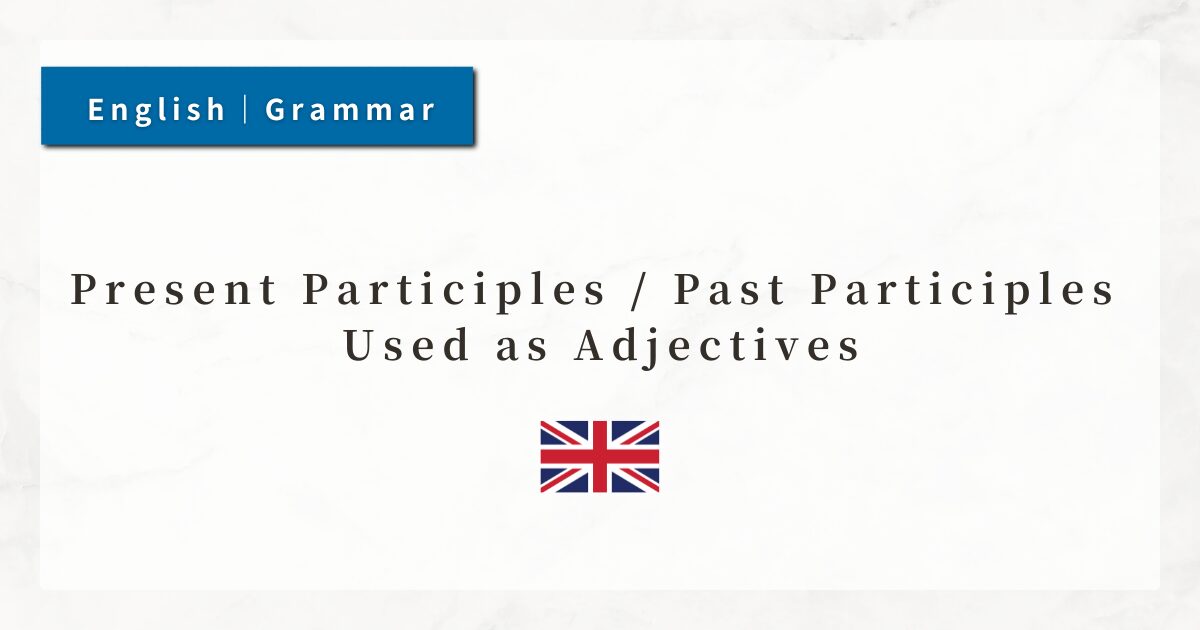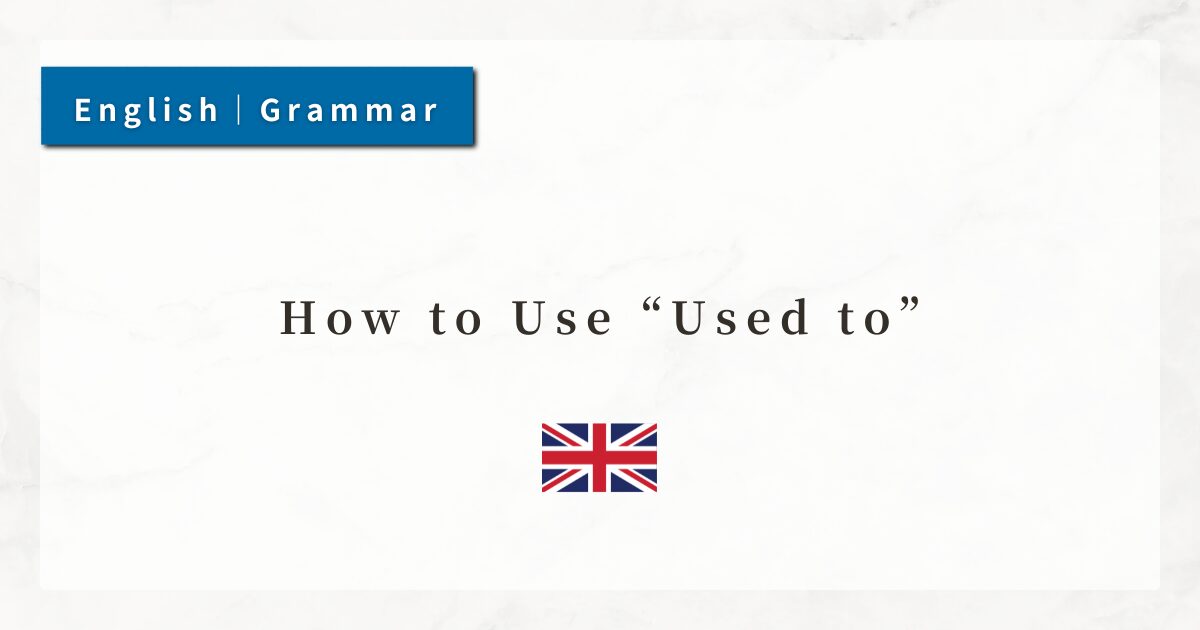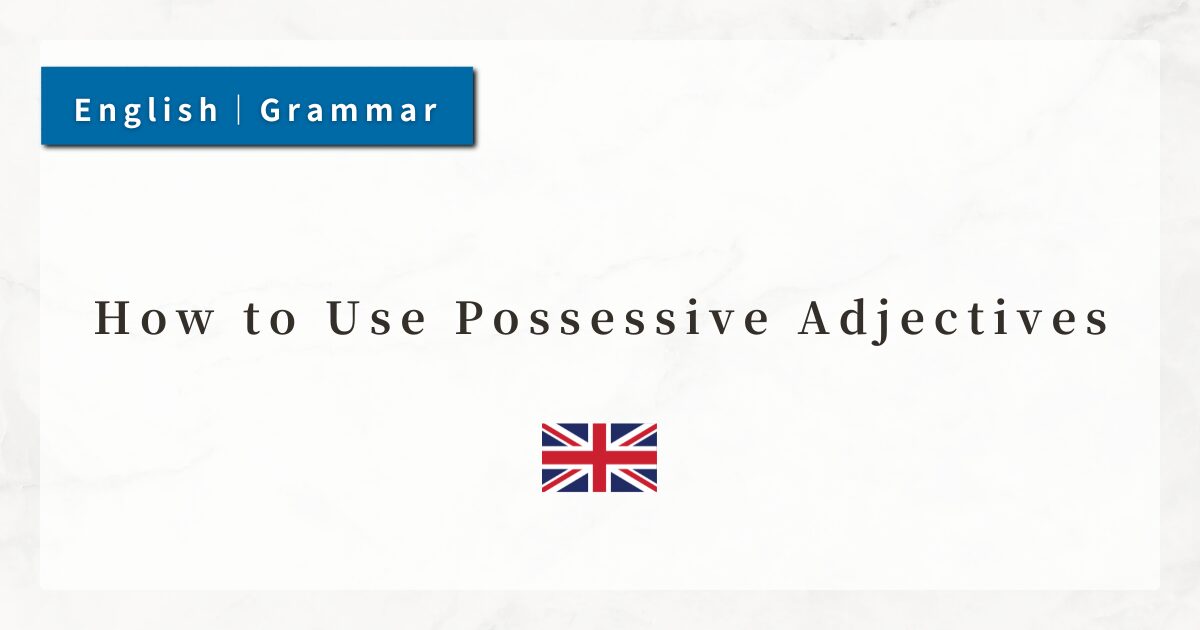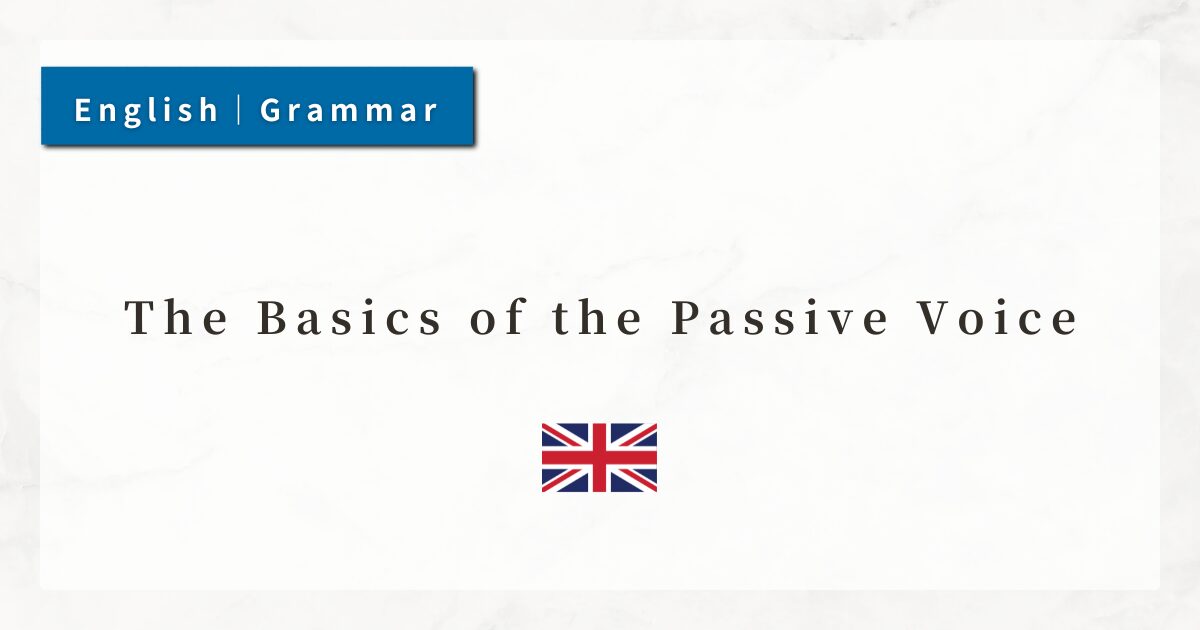#65 Present Participles / Past Participles Used as Adjectives|Expressions That Modify Nouns to Indicate State or Quality

Participles in English (present participle -ing / past participle -ed) are derived from verbs but function like adjectives to modify nouns.
By understanding this usage, I can more concretely describe “what kind of person” or “what kind of thing” I am talking about. This greatly expands my ability to express myself in English.
In this lesson, I will explain in detail how present and past participles are used adjectivally, along with example sentences.
1. The Adjectival Use of Present Participles
A present participle (-ing form) modifies a noun to indicate an active meaning such as “doing” or “causing.”
1-1. Describing an Ongoing Action
- a crying baby
- a sleeping cat
- a shining star
The key point is that the action is being described directly, as in “in the middle of doing.”
1-2. Expressing Qualities or Characteristics
- an interesting movie
- a boring lecture
- a surprising result
In this case, the participle expresses a quality that affects people.
1-3. Usage in Sentences
- The girl standing at the door is my sister.
- The man talking to Tom is our teacher.
Phrases like “standing at the door” or “talking to Tom” describe “the girl” or “the man.”
2. The Adjectival Use of Past Participles
A past participle (-ed form) modifies a noun to indicate a passive meaning such as “done” or “being in a state after an action.”
2-1. Expressing a State
- a broken chair
- a closed door
- a lost wallet
These express a state resulting from an external action.
2-2. Expressing Emotions
- an interested student
- a tired worker
- a satisfied customer
With emotions, the past participle refers to “the person who has the feeling.”
2-3. Usage in Sentences
- The cake made by my mother was delicious.
- The books written in French are difficult to read.
Here, the nouns are described as having “received an action.”
3. The Difference Between Present and Past Participles
Even though they come from the same verb, present and past participles often carry very different meanings.
3-1. interesting / interested
- an interesting movie
→ The movie entertains people. - an interested student
→ The student has interest.
3-2. tiring / tired
- a tiring day
→ The day makes people tired. - a tired man
→ The man is in a tired state.
3-3. exciting / excited
- an exciting match
→ The match excites people. - an excited child
→ The child feels excited.
4. Summary
- The present participle (-ing) expresses an active meaning, modifying nouns as “doing” or “causing.”
- The past participle (-ed) expresses a passive meaning, modifying nouns as “done” or “being in a state.”
- With emotion-related participles, the distinction is especially important:




